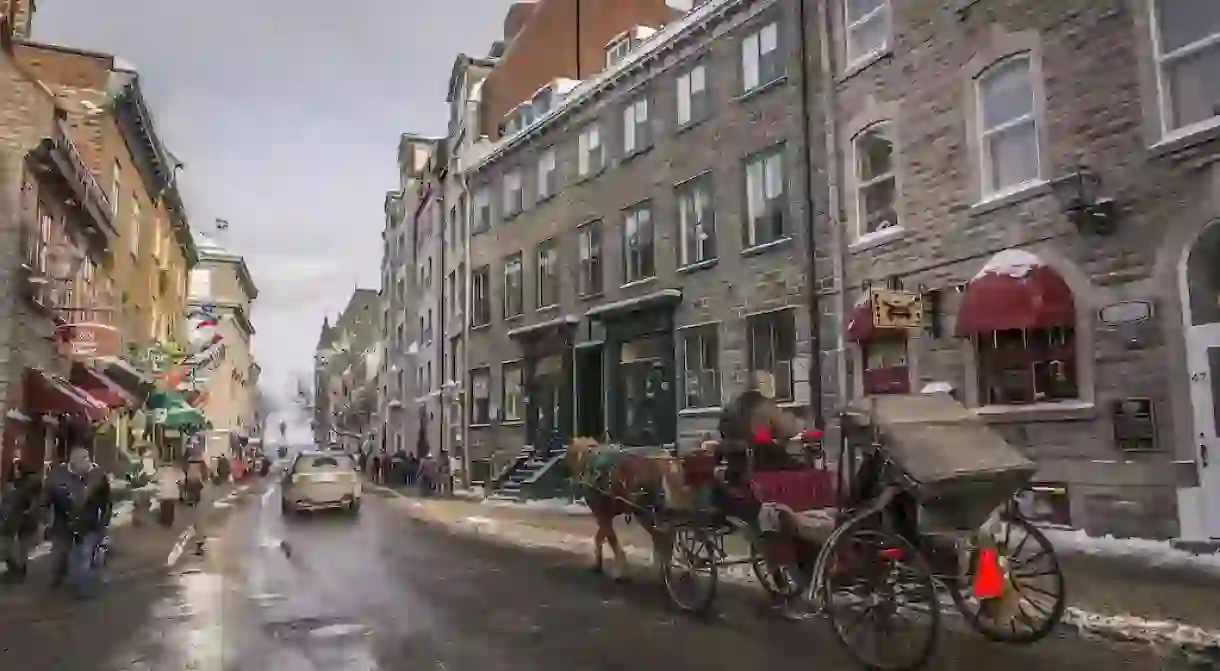The Story Behind Canada’s Famous Winter Festival, the Carnaval de Québec

Represented by the distinctive Bonhomme figure, the Québec Winter Carnival is the oldest and most famous of the winter festivals that take place each year across Canada. The popular tradition of holding a mid-winter celebration in Quebec City can even be traced back to the colonial history of New France.
To relieve the tedium and deep freeze of winter, the habitants of New France would gather for a celebration before Lent, from around the end of January to mid-February. In Quebec City, the first large-scale winter carnival occurred in 1894, but it was interrupted by both world wars and the Great Depression.

In 1954, a group of Quebec City businessmen decided to bring the carnival back on a grander scale in order to promote the economic development of the region. The first “modern” Carnaval de Québec took place in 1955, and at this point, the Bonhomme was chosen as the event’s representative mascot.
https://www.instagram.com/p/BQYpXnKgJSi/?taken-by=bhcarnaval
The Bonhomme figure, short for bonhomme de neige, or “snowman,” is known as the official ambassador of the Carnaval de Québec. He’s a large snowman sporting a red cap, black buttons, and a traditional French Canadian ceinture fléchée, or “arrowed sash.”

The Carnaval soon became a must-see event for the local population and a significant driver of tourism in the city. Over the years, the Carnaval has added many winter sports and activities inspired by the traditional Québécois way of life.

Among the most famous attractions of the festival are the nighttime and daytime parades, led by the Bonhomme, that wind through the historic city—which is decorated for the occasion with lights and ice sculptures. There are a variety of public dance parties, shows, and live music across Quebec City, some of them held outside in the cold or inside the large ice palaces created specifically for the festival. There is an annual sleigh race through the Plains of Abraham, as well as a traditional ice canoe race on the St. Lawrence River.
https://www.instagram.com/p/BQan9LQgbg3/?taken-by=bhcarnaval
There is an ongoing controversy surrounding the “Duchesses” of the Carnaval, a tradition that selected seven young women based on physical appearance and “agreeable” personality traits to represent the seven districts of Quebec—leading up to the crowning of a Carnaval Queen. The feminist movement of the 1970s and ’80s critiqued the tradition, but it was recently reinstated with a modern twist. During the 2014 edition of the Carnaval, the Duchess contest was an entrepreneurial competition, where aspiring Duchesses between the ages of 19–35 submitted proposals for projects related to the Carnival in order to help fundraising initiatives.
https://www.instagram.com/p/BYbX2MklUtL/?taken-by=duchessescarnaval
Up to one million people attend the Carnaval annually, which makes it one of the largest winter festivals in the world. To this day, Carnaval de Québec remains an important feature of the local history, culture, and economy.
https://www.instagram.com/p/BQbDauIBseP/?taken-by=carnavaldequebec













